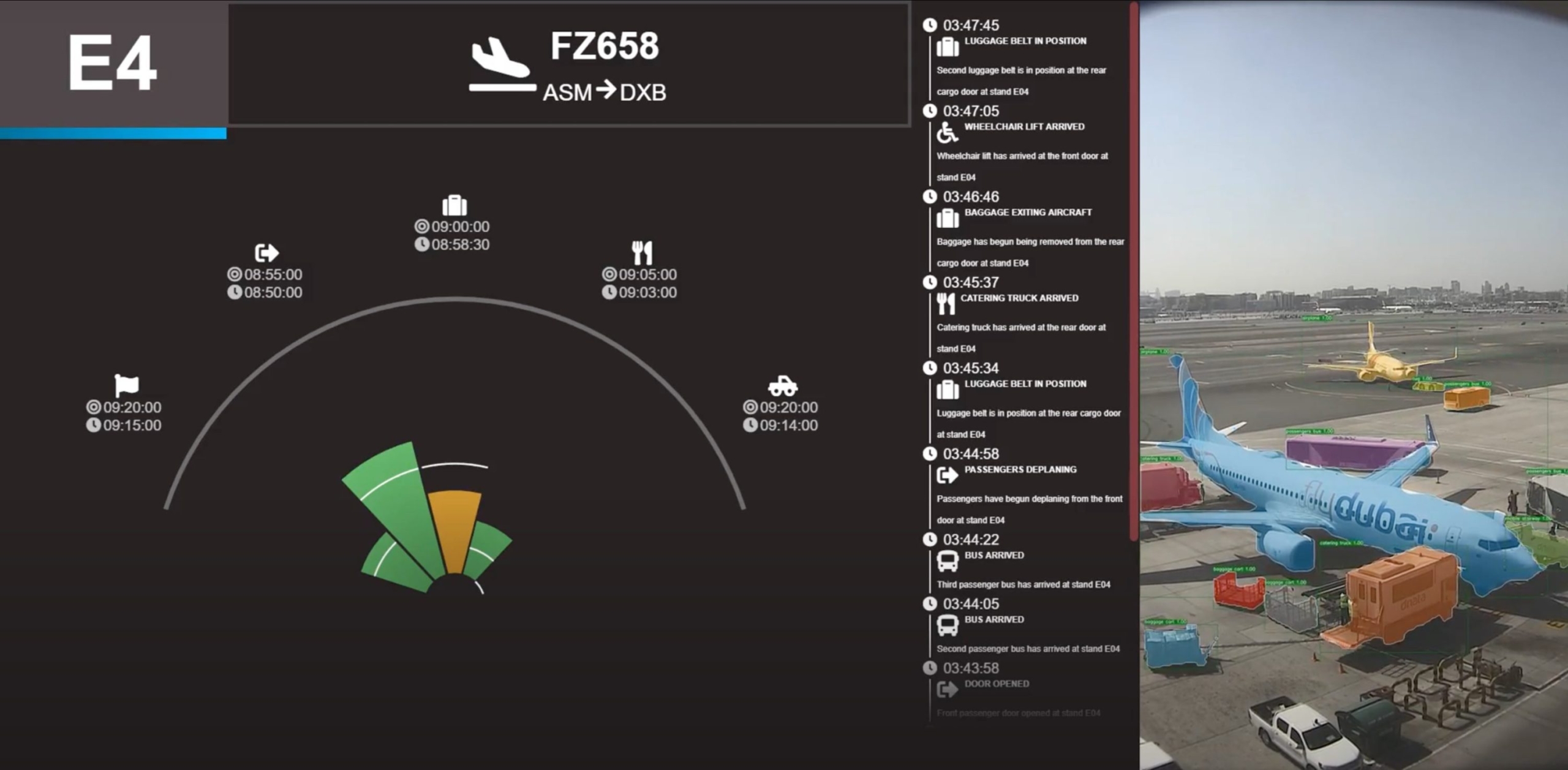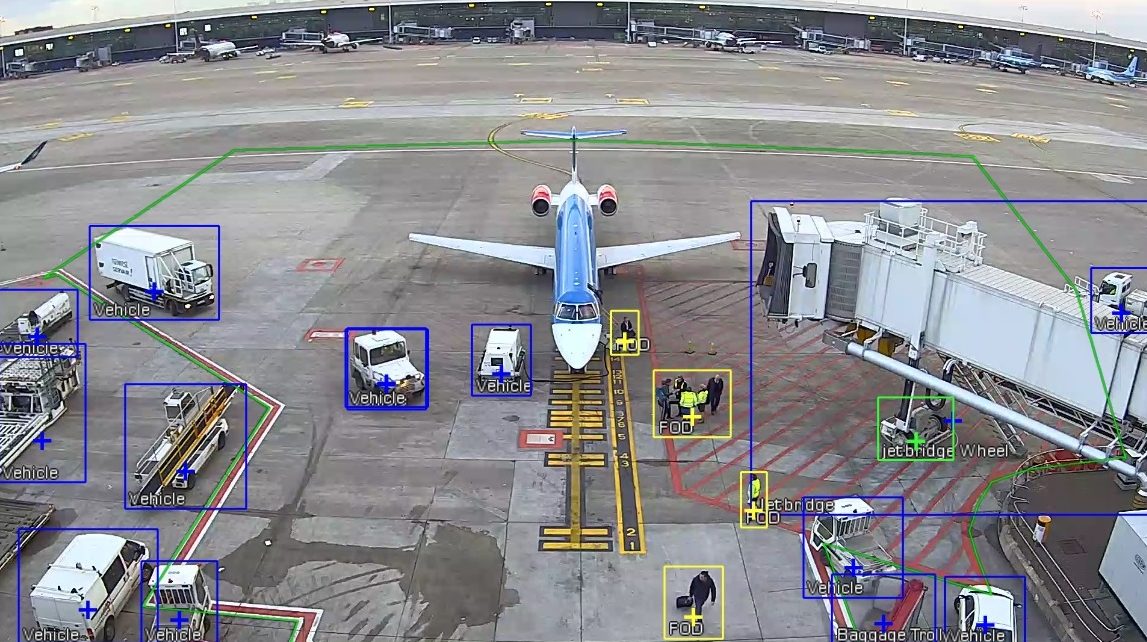With Digital Towers, AI plays a significant role in levering digital technologies to enhance airport and airspace operations. Using a combination of sensors, cameras, data analytics and AI algorithms, we’re able to provide air traffic controllers with a comprehensive view of the airport and surrounding airspace, making the operation safer, more flexible and efficient.

AI can make operations safer, more flexible and efficient.
Aimee is Searidge Technologies’ advanced neural network framework for the development of AI-based solutions for ATM and airport efficiency. Aimee has been developed to aid air traffic controllers and airport operators in managing runway arrival spacing, improving capacity in poor weather conditions, and even monitoring radio transmission from pilots and highlighting errors.
But what does this mean in practice? With three key functional areas; Computer Vision, Natural Language Processing and Flight & Surveillance Data Processing, Aimee learns from historic and scheduled operational data to improve the overall airport operation.
This comes into play at Heathrow where Aimee’s AI technology is being trialled with the aim to help controllers tackle a reduction in landing capacity due to limited visibility from the tower cab – Tower in the Cloud.
AIMEE can potentially provide an extra 20% landing capacity on low visibility days.
Paired with a network of 4K cameras positioned at select runway exit point, Aimee has learnt to recognise when all extremities of an aircraft have safely left the runway – potentially giving back the operation an extra 20% landing capacity on low visibility days.
Aimee can also advise on Stand Management plans, using flight plans, radar, weather and ground handling information to advise controllers.

Aimee can advise on Stand Management to support Controllers.
Unlike for some other industries, technology systems in safety-critical industries, such as the Air Traffic Management and Airport operations Industries, must be proven to be safe and reliable. Before any technology system, including an AI-powered system, can be operationally deployed in these industries, it must be proven to be safe and approved by the responsible regulatory authority.
Searidge and NATS have been pioneering the application of AI technologies in aviation by working together with globally leading ANSP and airport customers and engaging the responsible regulators in a collaborative technology system delivery approach.
Other ways AI is utilised in Digital Towers:
Advanced Surveillance. AI-powered cameras and sensors are used to monitor runways, taxiways, gates, and other critical areas. AI algorithms can detect and track aircraft, vehicles, and other objects, providing real-time situational awareness to air traffic controllers.
Predictive Analytics. AI can analyse historical data and current conditions to predict potential future congestion or issues at the airport. This enables controllers to proactively manage traffic and optimise runway and stand/gate allocation.
Automated Alerts. AI can generate automated alerts for air traffic controllers when unusual or potentially hazardous situations are detected. For example, it can identify aircraft trajectory conflicts or runway incursions.
Automated Decision Support. AI algorithms can provide controllers with decision support tools, including suggested routing and sequencing of aircraft. This can help improve efficiency and reduce delays.
Remote Operations. Digital Towers often enable remote tower operations, where controllers can manage multiple airports from a central location. AI can assist in highlighting the most important data and make suggestions for remote controllers.
Enhanced Security. AI can be used to identify security threats, such as unauthorised intrusions on the airport grounds or suspicious behaviour, by analysing camera feeds and other sensor data.
Human-Machine Collaboration. AI doesn't replace human controllers but works alongside them. It can assist controllers in managing traffic, improving safety, and making more informed decisions.
Continuous Improvement. AI systems can continuously be improved, allowing them to be adapted to new operational situations over time. Continuous improvement is achieved by collecting operational data and training the AI on an ever increasing dataset. This helps in making the digital tower system more efficient and responsive.
Reduced Costs. Digital Towers with AI capabilities can reduce operational costs by optimising resource allocation and improving overall efficiency.
The real transformative power of Digital Towers lies in using AI to augment and improve an existing operation in order to solve a specific problem or challenge, whether that’s the need to reduce costs, incorporate new ground-based infrastructure, or provide a contingency facility.
Digital Towers are transforming the way air traffic is controlled, and the implementation of AI in Digital Towers aims to enhance safety, increase efficiency, and improve the overall management of air traffic. It is an example of how AI is transforming various industries by providing advanced data analytics and decision support tools.
The possibilities with AI are truly endless.